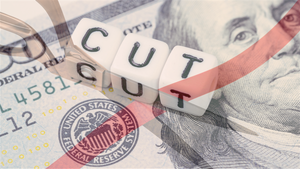Abbey Croftson highlights the continued significance of the U.S. dollar in global finance, emphasizing its role as a stable foundation for institutional portfolios, cross-border trade, and long-term asset allocation. Despite market diversification and digital innovation, the firm highlights that the dollar remains central due to its liquidity, legal clarity, and strategic utility in modern financial planning.
(PRUnderground) June 3rd, 2025
In a fast-changing global economy, the role of the U.S. dollar remains both foundational and dynamic. While financial markets continue to diversify and digitize, the dollar remains the most liquid, widely accepted, and strategically significant currency in global trade and capital flows.
Rather than viewing the dollar through the lens of volatility or speculation, long-term allocators are focusing on its enduring relevance and adaptability — a theme that informs our outlook at Abbey Croftson, where we consider currency not just as a medium of exchange, but as a strategic signal of trust, scale, and long-term confidence.
A Foundation of Global Finance
The U.S. dollar remains the anchor of international trade, capital markets, and cross-border investment. As of 2025, it accounts for roughly 58% of global foreign exchange reserves, according to data compiled by the International Monetary Fund. It’s used in nearly 90% of all global FX transactions, and over 50% of international trade invoices are denominated in USD, regardless of whether the U.S. is a party to the transaction.
This deep liquidity and network effect make the dollar indispensable in both stable and disruptive times. Whether financing international infrastructure projects, conducting global M&A transactions, or managing multi-asset portfolios, institutions rely on the dollar’s breadth and predictability.
Stability in a Diversifying World
As financial markets become more interconnected, the dollar’s role is not shrinking — it’s adapting. Central banks and sovereign wealth funds may be diversifying their reserves modestly, but the dollar remains the benchmark to which others are compared.
Its relative strength lies not just in domestic policy, but in:
- Transparent financial markets
- Rule-of-law institutions
- Global access to dollar-denominated capital markets
While some portfolios now include a broader mix of currencies for strategic reasons, the dollar continues to serve as a core holding in multi-currency structures, especially for institutions prioritising liquidity and scale.
Institutions aren’t just choosing the dollar out of habit — they’re choosing it because it works. Dollar-denominated equities and fixed-income securities offer unparalleled access to innovation, infrastructure, and long-term compounding markets.
As global allocators look beyond headline volatility, the dollar remains a key enabler of:
- Global equity diversification
- High-grade corporate and sovereign bond markets
- USD-denominated private capital transactions
This trend is especially pronounced in pension funds, insurance firms, and endowments that require stable long-term exposures with global optionality and structural depth.
“The U.S. dollar’s global role is supported by more than history — it’s underpinned by institutional trust and operational utility.”
— James Shaw, Managing Partner, Abbey Croftson
The Dollar in a Multi-Asset Portfolio
For modern asset allocators, the dollar serves not only as a currency but also as a tool for portfolio construction. It provides a natural hedge in times of stress, serves as a base layer for risk models, and offers a reliable denominator for pricing global assets.
Rather than replace the dollar, forward-thinking institutions are complementing it — using selective non-USD exposures to create balance, not bias.
In 2025, a well-diversified global portfolio is likely to:
- Be denominated in USD for reporting consistency
- Maintain a majority of fixed-income exposures in U.S. markets
- Use dollar-based hedging tools to offset non-USD equity volatility
This makes the dollar a linchpin in cross-asset integration — a role no other currency currently fulfils at scale.
Currency Confidence and Cross-Border Trade
In global trade, the dollar’s usage remains widespread across every major sector, from commodities to industrials to digital services. Its dominance in energy and commodity pricing continues to anchor international demand for USD liquidity.
What makes the dollar especially resilient in trade is not just pricing mechanics, but trust:
- Sellers know they’ll be paid in a currency backed by deep credit markets
- Buyers can hedge exposure with widely available derivatives
- Regulators and financial institutions operate in a globally recognised framework
Even as regional trade agreements emerge, the dollar continues to provide continuity in contracts, settlements, and financing, reinforcing its utility far beyond U.S. borders.
Digital Trends Reinforcing, Not Replacing
While much has been made of digital currencies and blockchain-based assets, their rise has not displaced the dollar’s role — in fact, it may be enhancing it.
The expansion of dollar-denominated stablecoins, for instance, has extended USD liquidity into decentralised financial ecosystems. Meanwhile, tokenised treasuries and digital asset custody are increasingly denominated in U.S. dollars, not as a relic of the past, but as a strategic default in a globalising digital future.
This illustrates that innovation and tradition are not mutually exclusive — the dollar remains the preferred currency infrastructure even in emerging financial technologies.
Outlook: Strong, Stable, and Strategic
As we move deeper into the second half of the decade, the U.S. dollar remains a strategic foundation for institutions amid increasing complexity. Its enduring strength isn’t about dominance — it’s about relevance, reliability, and the role it plays in connecting global markets.
“In a world of changing dynamics, the U.S. dollar remains a critical constant — a reference point that continues to serve investors, institutions, and global markets with scale and confidence,”
— James Shaw, Managing Partner, Abbey Croftson
For institutions allocating capital across geographies, sectors, and asset classes, the dollar provides more than liquidity — it offers consistency in a world that is anything but.
The U.S. dollar continues to play a central role in global finance — not because of inertia, but because of the strategic clarity it offers in a fragmented, fast-moving world. Its deep liquidity, legal infrastructure, and integration across asset classes make it an indispensable element of modern portfolio construction.
As institutions embrace diversification, the dollar remains the foundation around which global strategies are built. For those navigating today’s financial complexity, the focus isn’t about moving away from the dollar — it’s about understanding how best to work with it.
The post The Evolving Role of the U.S. Dollar in Global Markets – Insights from Abbey Croftson first appeared on
Original Press Release.






